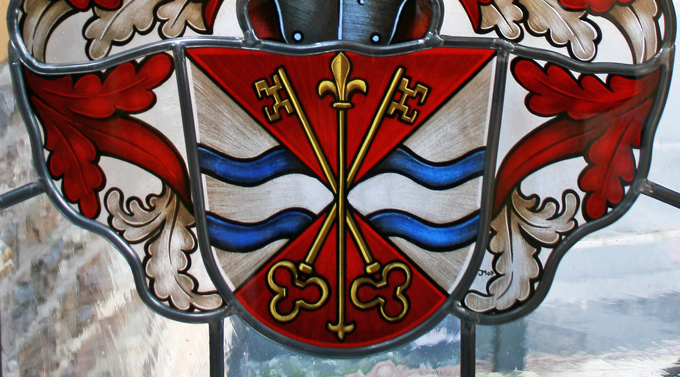Cultural Places of Interest
The Cochem region is rich with cultural interests:
Castles and ruins, museums, and historic cityscapes tell us the cultural history of the region. Along the Moselle, there are traces of many of the important eras.

Historic Monuments
![]()
The Roman structures tell the stories of the past. The Porta Nigra, in Germany’s oldest city- Trier, shows imperial splendour (www.trier.de) and perched high above the ”Deutsches Eck“ in Koblenz is Fortress Ehrenbreitstein, which reflects the glory of the Prussians (www.koblenz.de).
Historic structures shape the landscape with cityscapes like Trier or Koblenz, as well as the Moselle towns of Cochem (www.cochem.de), Bernkastel-Kues, Zell, Beilstein, Traben-Trarbach, or the spa town of Bad Bertrich.
In the long loops of the Moselle River, the romantic wine villages can be explored with the ”Night Watchman of Cochem“, see their historic landmarks, winding streets, and half-timbered houses, which are typical of this region.
For more information:
Castles
![]()
In the many medieval castles along the Moselle, the middle ages are alive. Within a 25 km radius from Cochem, there are 33 castles and castle ruins. In Cochem’s own castle, ”Reichsburg“ (www.burg-cochem.de), there are regularly scheduled guided tours, meals served in the same style as the knights enjoyed, and a look into the falconry to give you authentic insights into past worlds.
Additional visits to these nearby castles are worthwhile: Castle Eltz (www.burg-eltz.de) in Moselkern, Castle Pyrmont (www.burg-pyrmont.de) near Treis-Karden, Castle Thurant near Alken, Ehrenburg near Brodenbach, Castle Arras near Alf, the ruins of Castle Metternich in Beilstein, Grevenburg in Traben-Trarbach, Landshut in Bernkastel-Kues, and the castle ruins of Saarburg.
For more information:
Regional
![]()
Many local museums, such as the open-air folklore museum ”Roscheider Hof“ in Konz (www.roscheiderhof.de), bring the life and traditions of the past into the present. Sacred religious art and history can be admired in many churches and cloisters, such as the Capuchin monastery in Cochem and the diocese museum in Treis-Karden.
And for the wine, of course, there are relevant wine museums in Ehnen (Luxembourg), Leiwen, Bernkastel-Kues, in Cloister Machern near Zeltingen, Enkirch, Zell, Alf, Senheim, Pommern, and Winningen.
There are also a variety of traditional cultural techniques to experience.
Take a peek over the shoulder of a mustard miller in Cochem’s historic mustard mill, ”Historische Senfmuehle“, which has been in existence since 1810 (www.senfmuehle.net). Or stand nearby as the bronze is brought ”boil“; in the smelting furnace at the old bell foundry (www.glockengiesser.de). Gain some insight about the regional slate mining and processing which is found in the ”Deutschen Schieferbergwerk“ in Mayen (http://is.gd/slatemining) or in the ”Moselschiefer-Strasse“ (www.mosel-schieferstrasse.de).
Along your way through the vineyards on the lovely Moselle, over the vulcanic landscape of the Vulkanpark, up to the high areas of the Eifel, you can see the smooth, shiny slate roofs, which are typical in this region, lined up along the roads. Another trip which is worthwhile is to the world-famous gemstone city of Idar-Oberstein (www.idar-oberstein.de).
Viticulture & Wine
![]()
You can experience excellent wines and Moselle hospitality of Germany’s oldest wine region with the culinary delights and traditional Moselle street pubs or at one of the many wine festivals or folk festivals (www.mosellandtouristik.de).
But it is not only wine that is typical of the region around Cochem, it is also the metropolis of red Moselle vineyard peaches (http://is.gd/mosellepeaches) , which is offered in the classical form of a fruit spread, in combination with Moselle liqueur, or as a condiment served with the regional potato specialty ”Debbekooche“, which is another culinary highlight.
